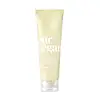What's inside
What's inside
 Key Ingredients
Key Ingredients

 Benefits
Benefits

 Concerns
Concerns

 Ingredients Side-by-side
Ingredients Side-by-side

Water
Skin ConditioningGlycerin
HumectantSodium Cocoyl Isethionate
CleansingHouttuynia Cordata Extract
Skin ConditioningHydroxypropyl Starch Phosphate
Potassium Cocoyl Glycinate
1,2-Hexanediol
Skin ConditioningCentella Asiatica Extract
CleansingBambusa Vulgaris Water
Skin ConditioningChamaecyparis Obtusa Water
MaskingBetula Platyphylla Japonica Juice
Skin ConditioningHouttuynia Cordata Powder
Skin ConditioningMalt Extract
Skin ProtectingGluconolactone
Skin ConditioningPotassium Cocoate
EmulsifyingButylene Glycol
HumectantAcrylates Copolymer
Ethylhexylglycerin
Skin ConditioningDisodium EDTA
Water, Glycerin, Sodium Cocoyl Isethionate, Houttuynia Cordata Extract, Hydroxypropyl Starch Phosphate, Potassium Cocoyl Glycinate, 1,2-Hexanediol, Centella Asiatica Extract, Bambusa Vulgaris Water, Chamaecyparis Obtusa Water, Betula Platyphylla Japonica Juice, Houttuynia Cordata Powder, Malt Extract, Gluconolactone, Potassium Cocoate, Butylene Glycol, Acrylates Copolymer, Ethylhexylglycerin, Disodium EDTA
Houttuynia Cordata Flower/Leaf/Stem Water
AntimicrobialGlycerin
HumectantSodium Cocoyl Glycinate
CleansingWater
Skin ConditioningDisodium Cocoamphodiacetate
CleansingSodium Lauroyl Glutamate
Glyceryl Stearate
EmollientPropanediol
SolventCoco-Glucoside
CleansingSodium Chloride
MaskingDecyl Glucoside
CleansingHectorite
Absorbent1,2-Hexanediol
Skin ConditioningHydroxyacetophenone
AntioxidantSalicylic Acid
MaskingButylene Glycol
HumectantPolyquaternium-67
Houttuynia Cordata Powder
Skin ConditioningSodium Acrylates/C10-30 Alkyl Acrylate Crosspolymer
Sorbitol
HumectantEthylhexylglycerin
Skin ConditioningEucalyptus Globulus Leaf Oil
PerfumingHexylene Glycol
EmulsifyingOenothera Biennis Flower Extract
AstringentPueraria Lobata Root Extract
HumectantPinus Palustris Leaf Extract
TonicUlmus Davidiana Root Extract
Skin ConditioningPentylene Glycol
Skin ConditioningSodium Hyaluronate
HumectantHyaluronic Acid
HumectantHydrolyzed Hyaluronic Acid
HumectantHydroxypropyltrimonium Hyaluronate
Hydrolyzed Sodium Hyaluronate
Skin ConditioningPotassium Hyaluronate
Skin ConditioningSodium Hyaluronate Crosspolymer
HumectantSodium Acetylated Hyaluronate
HumectantQuercetin
AntioxidantHouttuynia Cordata Flower/Leaf/Stem Water, Glycerin, Sodium Cocoyl Glycinate, Water, Disodium Cocoamphodiacetate, Sodium Lauroyl Glutamate, Glyceryl Stearate, Propanediol, Coco-Glucoside, Sodium Chloride, Decyl Glucoside, Hectorite, 1,2-Hexanediol, Hydroxyacetophenone, Salicylic Acid, Butylene Glycol, Polyquaternium-67, Houttuynia Cordata Powder, Sodium Acrylates/C10-30 Alkyl Acrylate Crosspolymer, Sorbitol, Ethylhexylglycerin, Eucalyptus Globulus Leaf Oil, Hexylene Glycol, Oenothera Biennis Flower Extract, Pueraria Lobata Root Extract, Pinus Palustris Leaf Extract, Ulmus Davidiana Root Extract, Pentylene Glycol, Sodium Hyaluronate, Hyaluronic Acid, Hydrolyzed Hyaluronic Acid, Hydroxypropyltrimonium Hyaluronate, Hydrolyzed Sodium Hyaluronate, Potassium Hyaluronate, Sodium Hyaluronate Crosspolymer, Sodium Acetylated Hyaluronate, Quercetin
 Reviews
Reviews

Ingredients Explained
These ingredients are found in both products.
Ingredients higher up in an ingredient list are typically present in a larger amount.
1,2-Hexanediol is a synthetic liquid and another multi-functional powerhouse.
It is a:
- Humectant, drawing moisture into the skin
- Emollient, helping to soften skin
- Solvent, dispersing and stabilizing formulas
- Preservative booster, enhancing the antimicrobial activity of other preservatives
Butylene Glycol (or BG) is used within cosmetic products for a few different reasons:
Overall, Butylene Glycol is a safe and well-rounded ingredient that works well with other ingredients.
Though this ingredient works well with most skin types, some people with sensitive skin may experience a reaction such as allergic rashes, closed comedones, or itchiness.
Learn more about Butylene GlycolEthylhexylglycerin (we can't pronounce this either) is commonly used as a preservative and skin softener. It is derived from glyceryl.
You might see Ethylhexylglycerin often paired with other preservatives such as phenoxyethanol. Ethylhexylglycerin has been found to increase the effectiveness of these other preservatives.
Glycerin is already naturally found in your skin. It helps moisturize and protect your skin.
A study from 2016 found glycerin to be more effective as a humectant than AHAs and hyaluronic acid.
As a humectant, it helps the skin stay hydrated by pulling moisture to your skin. The low molecular weight of glycerin allows it to pull moisture into the deeper layers of your skin.
Hydrated skin improves your skin barrier; Your skin barrier helps protect against irritants and bacteria.
Glycerin has also been found to have antimicrobial and antiviral properties. Due to these properties, glycerin is often used in wound and burn treatments.
In cosmetics, glycerin is usually derived from plants such as soybean or palm. However, it can also be sourced from animals, such as tallow or animal fat.
This ingredient is organic, colorless, odorless, and non-toxic.
Glycerin is the name for this ingredient in American English. British English uses Glycerol/Glycerine.
Learn more about GlycerinHouttuynia Cordata Powder comes from the Fish Mint or Chameleon plant. It is an herb native to southeast Asia and used throughout the continent. It is used in traditional cooking and medicine.
The components found in Fish Mint give it antioxidant, hydrating, antimicrobial, and anti-inflammatory properties.
Water. It's the most common cosmetic ingredient of all. You'll usually see it at the top of ingredient lists, meaning that it makes up the largest part of the product.
So why is it so popular? Water most often acts as a solvent - this means that it helps dissolve other ingredients into the formulation.
You'll also recognize water as that liquid we all need to stay alive. If you see this, drink a glass of water. Stay hydrated!
Learn more about Water